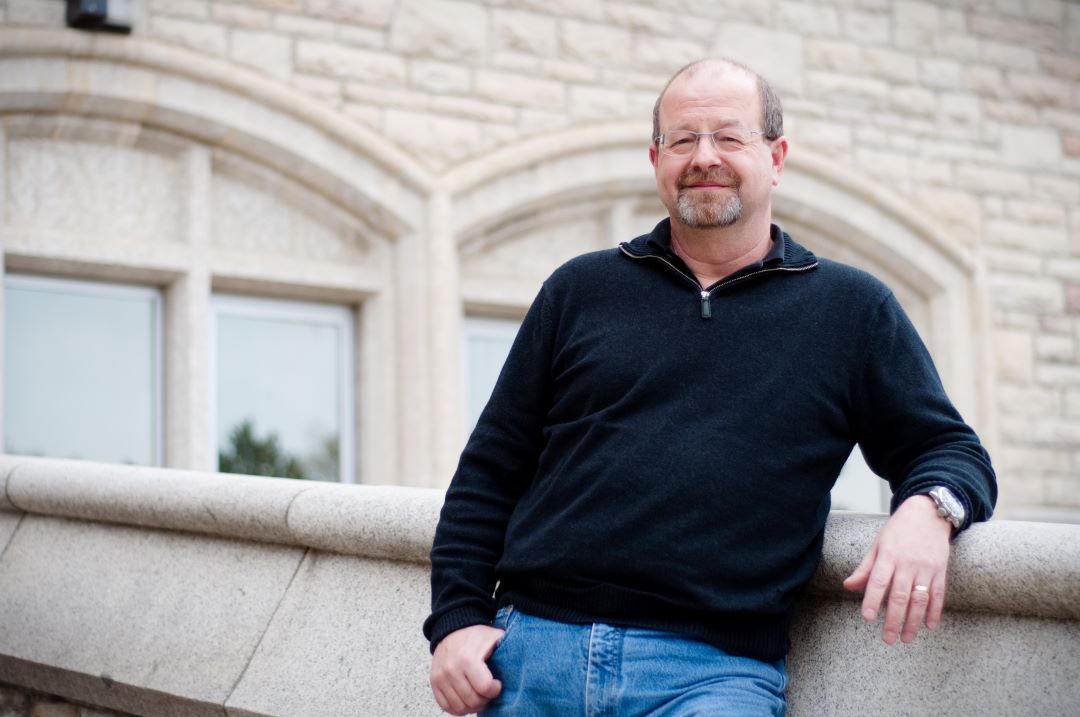
Pierson awarded Distinguished Professorship
Dr. Pierson may call himself an 'accidental scientist', but his work has changed the lives of countless women across the globe
By Marg SheridanIt’s sometimes easy, considering how relatively common-place contraception and fertility treatments are now, to forget the research that went into making them effective is only several decades old – and no small part of this body of work has been affected by Dr. Roger Pierson.
So it was no surprise to his coworkers when Pierson was awarded a Distinguished Professorship in June following his nomination, and impressive, support from both the College of Medicine and The Western College of Veterinary Medicine.
When asked about the outpouring of support from both colleges, Pierson demurred.
“That recognition was for the hard work of a really small team,” he stressed. “We made some very basic medical discoveries and we were able to leverage those discoveries into many different areas - into fertility therapy, which is very important, and into contraceptive development - we’ve a hand in developing probably five or six different new modalities of hormone contraception in women based on that work, so it has been key to some really important pharmaceutical developments.”
Pierson, a professor of Obstetrics and Gynecology, has also be an adjunct professor at the WCVM based on the collaborative nature of his research.
“Back when we started the work our understanding of how the ovaries really worked was a bit nebulous,” he explained regarding his research into ovarian follicular development. “The lab where I (did) my PhD had one of the very first real-time ultrasound machines in North America, and we dedicated that to research in horses, and horses are particularly important because they have the largest ovaries in any mammal.
“We were able to get better ultrasound pictures back in the day in horses than we could in any other species – especially humans.”
The resultant pictures revealed that the way ovaries were thought to work, the mechanisms taught in textbooks through hormonal observation, were in fact not correct. And, as Pierson explained, the findings had large implications for fertility therapy and the provisions of hormonal contraception – in fact, nearly every fertility clinic in the world uses some of their fertility therapy research in the treatment of infertility patients, and the other parts of the research is heavily cited in the FDA’s ‘Missed Pill’ guidelines.
“I’m kind of an accidental scientist – and, an accidental Canadian for that matter,” he said with a laugh.
While his work with humans may have been a surprise for Pierson, his original research with horses wasn’t as unexpected.
“I grew up on a horse breeding farm and my father is a theriogenologist – which is an obstetrician and gynecologist for animals,” Pierson continued. “I grew up with this stuff, and I actually cannot remember not being fascinated with reproduction.”
And while reproductive medicine may still be considered new, it has grown substantially.
“Fertility therapy alone when I started in the early 80’s - if we had a five per cent success rate in a month that was cause for a big celebration,” he explained. “Now many of the top clinics in North America are getting between 60 and 70 per cent per cycle conception rates.
“We’re beating mother nature many times over, which is a strong commendation of the quality of lab work going into it, the quality of the research that lead to the changes.“
Moving forward, Pierson is working on a new way to stimulate ovaries without the inherent dangers associated with the drugs that were once used. His team is also in the process of commercializing a new test that would allow physicians at IVF clinics to assess the quality of the endometrium to help determine the best time to implant embryos, or when to freeze them, for a higher success rate.
Dr. Pierson is a Fellow of the Canadian Academy of Health Sciences, the Canadian Institute of Academic Medicine, Canadian Society for Clinical Investigation, the European Academy of Sciences and, amongst a litany of other awards, has also received a Top Science Stories of the Year award from Discover Magazine, and a Chatelaine Women’s Health Hero Research Award.
